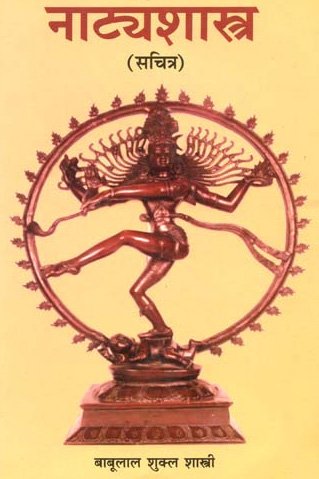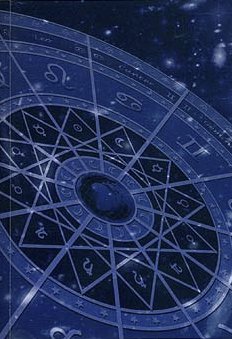Pahlava, Pahlavā: 13 definitions
Introduction:
Pahlava means something in Buddhism, Pali, Hinduism, Sanskrit. If you want to know the exact meaning, history, etymology or English translation of this term then check out the descriptions on this page. Add your comment or reference to a book if you want to contribute to this summary article.
In Hinduism
Purana and Itihasa (epic history)
Source: archive.org: Puranic EncyclopediaPahlava (पह्लव).—A place of human habitation of ancient India. This is situated in the western zone. (Śloka 68, Chapter 9, Bhīṣma Parva).
Source: Cologne Digital Sanskrit Dictionaries: The Purana IndexPahlavā (पह्लवा).—Defeated by Paraśurāma;1 attacked by Bāhu and defeated by Sagara;2 punished with wearing moustaches;3 kingdom of4
- 1) Brahmāṇḍa-purāṇa II. 31. 83; III. 41. 39.
- 2) Ib. III. 63. 120, 134.
- 3) Ib. III. 73. 108.
- 4) Matsya-purāṇa 121. 45; 144. 57; Vāyu-purāṇa 45. 118; 58. 82.
Pahlava (पह्लव) is a name mentioned in the Mahābhārata (cf. II.29.15, II.48.14, VI.10.46, III.48.20, VI.20.13) and represents one of the many proper names used for people and places. Note: The Mahābhārata (mentioning Pahlava) is a Sanskrit epic poem consisting of 100,000 ślokas (metrical verses) and is over 2000 years old.

The Purana (पुराण, purāṇas) refers to Sanskrit literature preserving ancient India’s vast cultural history, including historical legends, religious ceremonies, various arts and sciences. The eighteen mahapuranas total over 400,000 shlokas (metrical couplets) and date to at least several centuries BCE.
Natyashastra (theatrics and dramaturgy)
Source: Wisdom Library: Nāṭya-śāstraPahlava (पह्लव) is the name of a tribe, usually to be represented by a reddish-yellow (gaura) color when painting the limbs (aṅgaracanā), according to Nāṭyaśāstra chapter 23. The painting is a component of nepathya (costumes and make-up) and is to be done in accordance with the science of āhāryābhinaya (extraneous representation).

Natyashastra (नाट्यशास्त्र, nāṭyaśāstra) refers to both the ancient Indian tradition (shastra) of performing arts, (natya—theatrics, drama, dance, music), as well as the name of a Sanskrit work dealing with these subjects. It also teaches the rules for composing Dramatic plays (nataka), construction and performance of Theater, and Poetic works (kavya).
Jyotisha (astronomy and astrology)
Source: Wisdom Library: Brihat Samhita by VarahamihiraPahlava (पह्लव) (Cf. Pallava) refers to a country belonging to “Nairṛtī (south-western division)” classified under the constellations of Svāti, Viśākhā and Anurādhā, according to the system of Kūrmavibhāga, according to the Bṛhatsaṃhitā (chapter 14), an encyclopedic Sanskrit work written by Varāhamihira mainly focusing on the science of ancient Indian astronomy astronomy (Jyotiṣa).—Accordingly, “The countries of the Earth beginning from the centre of Bhāratavarṣa and going round the east, south-east, south, etc., are divided into 9 divisions corresponding to the 27 lunar asterisms at the rate of 3 for each division and beginning from Kṛttikā. The constellations of Svāti, Viśākhā and Anurādhā represent the south-western division consisting of [i.e., Pahlava] [...]”.

Jyotisha (ज्योतिष, jyotiṣa or jyotish) refers to ‘astronomy’ or “Vedic astrology” and represents the fifth of the six Vedangas (additional sciences to be studied along with the Vedas). Jyotisha concerns itself with the study and prediction of the movements of celestial bodies, in order to calculate the auspicious time for rituals and ceremonies.
In Buddhism
Mahayana (major branch of Buddhism)
Source: archive.org: Bulletin of the French School of the Far East (volume 5)Pahlava (पह्लव) (in Chinese: Po-lo-p'o) is the name of an ancient kingdom associated with Āśleṣā or Āśleṣānakṣatra, as mentioned in chapter 18 of the Candragarbha: the 55th section of the Mahāsaṃnipāta-sūtra, a large compilation of Sūtras (texts) in Mahāyāna Buddhism partly available in Sanskrit, Tibetan and Chinese.—Chapter 18 deals with geographical astrology and, in conversation with Brahmarāja and others, Buddha explains how he entrusts the Nakṣatras [e.g., Āśleṣā] with a group of kingdoms [e.g., Pahlava] for the sake of protection and prosperity.

Mahayana (महायान, mahāyāna) is a major branch of Buddhism focusing on the path of a Bodhisattva (spiritual aspirants/ enlightened beings). Extant literature is vast and primarely composed in the Sanskrit language. There are many sūtras of which some of the earliest are the various Prajñāpāramitā sūtras.
Languages of India and abroad
Sanskrit dictionary
Source: DDSA: The practical Sanskrit-English dictionaryPahlavā (पह्लवा).—m. (pl.) Name of a people; (the Persians ?); Manusmṛti 1.44.
Derivable forms: pahlavāḥ (पह्लवाः).
See also (synonyms): pahnavā, pahlikā.
Source: Cologne Digital Sanskrit Dictionaries: Benfey Sanskrit-English DictionaryPahlava (पह्लव).—n. The name of a people, the Persians.
Source: Cologne Digital Sanskrit Dictionaries: Cappeller Sanskrit-English DictionaryPahlava (पह्लव).—[masculine] [plural] the Parthians or the Persians.
Source: Cologne Digital Sanskrit Dictionaries: Monier-Williams Sanskrit-English DictionaryPahlava (पह्लव):—m. [plural] Name of a people (the Parthians or Persians), [Manu-smṛti x, 44; Mahābhārata] etc. (also spelt pahnava; in the [Viṣṇu-purāṇa] they are said to be a degraded Kṣatriya race conquered by Sagara and sentenced to wear beards).
Source: DDSA: Paia-sadda-mahannavo; a comprehensive Prakrit Hindi dictionary (S)Pahlava (पह्लव) in the Sanskrit language is related to the Prakrit words: Palhaya, Palhava.
[Sanskrit to German]
Sanskrit, also spelled संस्कृतम् (saṃskṛtam), is an ancient language of India commonly seen as the grandmother of the Indo-European language family (even English!). Closely allied with Prakrit and Pali, Sanskrit is more exhaustive in both grammar and terms and has the most extensive collection of literature in the world, greatly surpassing its sister-languages Greek and Latin.
See also (Relevant definitions)
Ends with: Kanthapahlava.
Full-text (+4): Palhaya, Pahnava, Palhava, Parasika, Pallava, Humbha, Pahlika, Yavana, Kshatrapa, Gondophares, Dasa, Adharmika, Maheccha, Parakramopeta, Murkha, Vijigishu, Vyavasaya, Parakrama, Utsikta, Maharashtra.
Relevant text
Search found 23 books and stories containing Pahlava, Pahlavā; (plurals include: Pahlavas, Pahlavās). You can also click to the full overview containing English textual excerpts. Below are direct links for the most relevant articles:
Pallava period (Social and Cultural History) (by S. Krishnamurthy)
Origin of the Pallava Dynasty < [Chapter 1 - Introduction]
Earlier Works < [Chapter 1 - Introduction]
Ramayana (by Manmatha Nath Dutt)
Chapter LIV < [Book 1 - Bāla-kāṇḍa]
The Shiva Purana (by J. L. Shastri)
Chapter 38 - From Satyavrata to Sagara < [Section 5 - Umā-Saṃhitā]
Chaitanya Bhagavata (by Bhumipati Dāsa)
Verse 1.1.39 < [Chapter 1 - Summary of Lord Gaura’s Pastimes]
Manusmriti with the Commentary of Medhatithi (by Ganganatha Jha)
Verse 10.44 < [Section III - Status of the Mixed Castes]